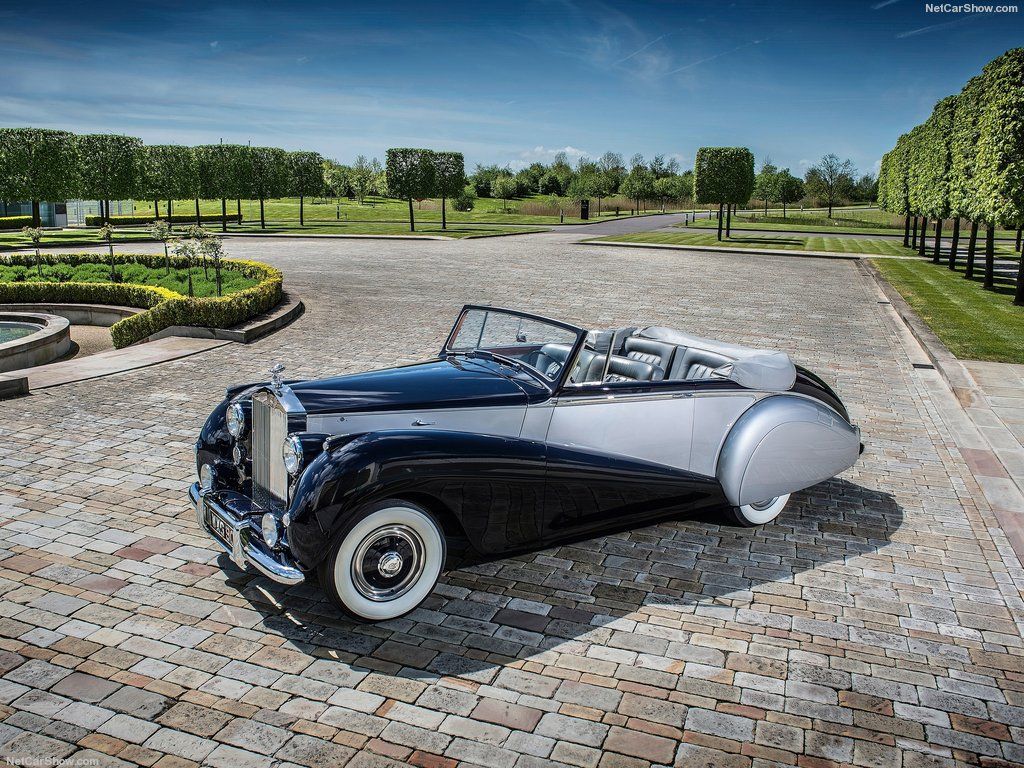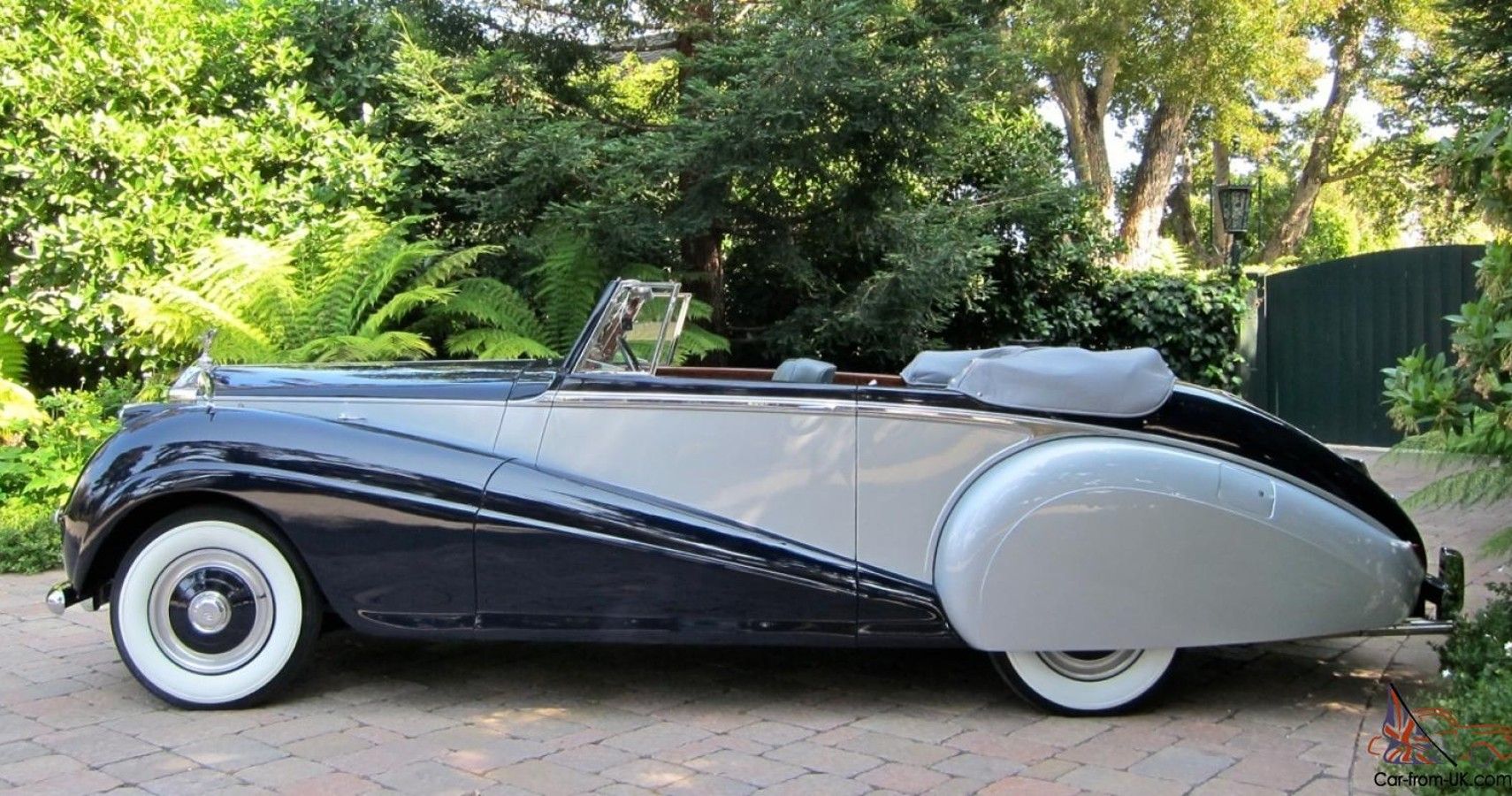The Rolls-Royce Silver Dawn's introduction in 1949 proved the public's approval and desire for the conventional steel body, since just a handful were equipped with unique coachwork. Following the war, Rolls-Royce determined that if an increase in volume was the primary goal, then the production of full motor vehicles was essential. This entailed creating a pressed steel body and upgrading some of their manufacturing procedures. From 1949 till 1955, only 760 of these automobiles were built. The Silver Dawn Series A to D had identical bodywork to the Bentley Mark VI.
The Rolls-Royce Silver Dawn body was customized in reference to the Bentley Mark VI body with the "E" series chassis no. SKE2 in 1953 and a large boot was added. The Bentley Mark VI changed its name to the Bentley R, however, the Silver Dawn still retained its name. All through the production period of the standard steel automobiles, all the body panels forward of the firewall were different from those fastened to the Bentley.
Initially, the Rolls-Royce Company was skeptical. It had no idea how the public would respond to the first non-coach built automobiles, but however it was favorably welcomed. Also, the Silver Dawn had an increasing interest, particularly in America, where the very first cars were shipped. The straight-six 4,257cc engine was used in these vehicles. A new industry was formed at home as well, with the Rolls-Royce Silver Dawn being available in the United Kingdom in 1953, and by that time it had the larger bore 4,566cc engine, automatic gearbox, and large boot coachwork.
Does This Rare Classic Pack A Punch Under Its Hood?
Initially, all cars were equipped with a four-speed manual transmission, however, a four-speed automatic transmission was made available in late 1952 on the 'E' Series chassis and the equivalent Bentley 'R' type chassis.
There are contradictory claims whether the automatic transmission became common in the Silver Dawn, however, both automatic and manual transmission choices were offered until the conclusion of the manufacturing run. The suspension of the Rolls-Royce Silver Dawn was independent at the front with coil springs, and live at the back with half elliptic leaf springs. Until the year 1953, the automobile had a separate chassis composed of a traditional riveted structure, but after that, it was welded.
Servo assistance drum brakes measuring 12.25 inches in diameter were utilized with the front hydraulically actuated, but the rear mechanically operated. Although many automobiles had factory-built bodywork, some were provided to outside coachbuilders. In 1954, The motor magazine evaluated a factory-bodied Rolls-Royce Silver Dawn with an automatic gearbox, which had a peak speed of 94mph and could go from 0-60 mph within 15.2 seconds. Fuel consumption was measured at 15.4 imperial MPG.
The 1952 Rolls-Royce Silver And Why It's A Match Made From Heaven To Those Considered Royalty
The Rolls-Royce Silver Dawn was well regarded and in high demand from the start, but it was only available in limited quantities, and those who wanted to purchase this automobile in Britain had to wait until 1953 to obtain one. The popularity of this car allowed Rolls-Royce to survive the post-war era and flourish in the following years. It turned out to be a brand so renowned, anybody who purchased one of its vehicles would be regarded very highly in society.
The majority of chassis received the conventional steel four-door body, however, most discerning clients could still request customized bodywork from a few existing pre-war private coachbuilders eager to show off their skills. These paid private coachbuilders could buy a chassis separately, then customize and build these automobiles to order. This was so popular that the Rolls-Royce corporation reacted by limiting the number of designs available.
Only fourteen Rolls-Royce Silver Dawns had special designs, eleven of these designs were constructed by Park Ward. As of today, the specially-designed automobiles are officially owned by Rolls-Royce. In the year 1952, the Rolls-Royce Silver Dawn's upgrades included an engine increase from 4,257cc to 4,566cc and also the option of an automatic or manual transmission, and a bigger, more attractive and roomy trunk was included.
This most desired and scarce Silver Dawn variation has Park Ward's magnificent 'foursome Drophead coupé' coachwork, with long, flowing frontal wings and a tapering tail, accented by rear wheel spats finished off by chrome accents. The hydraulically controlled hood, which is completely lined and affords the passengers traditional Rolls-Royce luxury when lifted, is a remarkable invention for its time. Of course, it is supplemented by the highest quality Connolly leather upholstery as well as Wilton carpets.
In keeping with its more sporty personality, this Drophead coupé foregoes the saloon's wood capping in favor of similar leather dash and door covers, the latter pleated in Art Deco's sunburst design.
How Much Do You Have To Dole Out To Make This Classic The Latest Addition To Your Garage?
The 1952 Rolls-Royce Silver Dawn Drophead is a very rare automobile with very few numbers of them still functional today, and it has an official base selling price of $21,200 on low retail, $37,000 on average retail and $56,600 on high retail.
Sources: Fortune, BusinessInsider, SuperCars

.jpg)


.jpg)